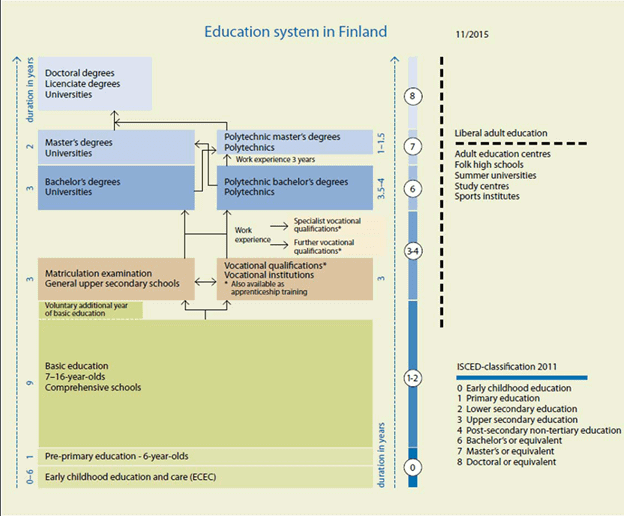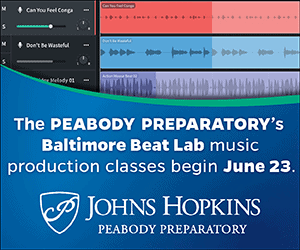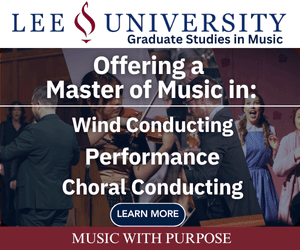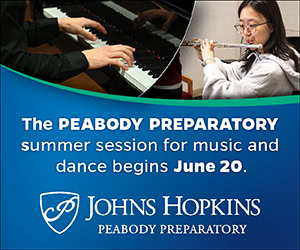/ News Posts / Excitement, Equity, Exploration: Music Education in Finland
Excitement, Equity, Exploration
Music Education in Finland
By NAfME Member Argine Safari
Argine Safari presented on “Excitement, Equity, Exploration: Music Education in Finland” during the NAfME 2021 PreK–12 Learning Collaborative in February 2021.

Photo by A. Safari: Vaskivuori Upper Secondary School Music Classroom and Studio. Vantaa, Finland.
Essential Question:
How do Finnish educators help their students develop freedom of expression and creativity?
The first thing that impressed me during my classroom observations in Finland was the excitement with which students and teachers were making music together. Freedom of expression. No boundaries. Trust in each other. Feeling of safety in the classroom and beyond. Comradery.
Finland is a small nation that leverages everyone’s potential and aims to give children of all social classes and backgrounds the opportunity to learn music. A lot of what I’ve observed is deeply rooted in Finnish history, the Finns’ ability to trust each other, to stay united, and to persevere in the face of adversity (the Finnish concept of sisu; Nylund, 2018). The goal of social equality manifests itself in how teaching is provided at music institutes and beyond (Arts Equal).

Although music teaching is rooted in the tradition of Western classical music, it is vastly extended to include a variety of genres and embraces modern, student-oriented approaches. The staples of the music instruments are piano, accordion, recorder, voice, and Finland’s national instrument, the kantele. However, students are provided instruction in a wide range of instruments of the orchestra as well as pop band instruments such as guitar, drums, and bass. Many schools also have their own recording studios.
Finnish education puts students at the center of learning and focuses on the relevance of each educational experience. Finnish schools are learning communities where participation and togetherness are emphasized, and the education system is known to have “no dead ends”:

Courtesy of Finnish Ministry of Education and Culture. Retrieved from: https://www.onthemosway.eu/finland-education-system/?cn-reloaded=1
I summarized some of the important take-aways from my personal observations (January-July 2019) and my interviews with Finnish educators (December 2020-February 2021).
7 Facts about Teaching Music in Finland
- Music Teacher preparation programs are highly selective, rigorous, comprehensive, and are aligned across the nation.
- Teachers must obtain a Masters degree in order to teach in schools.
- Teacher preparation programs, regardless of specialization, include a mandatory course on Free Accompaniment. Here, Toni Mäkinen from Sibelius Academy talks about the course and demonstrates different accompanying styles.
- Teachers use research-based practices and often conduct research themselves.
- There are government-supported music schools across the nation.
- Teachers are trusted and have autonomy (there are no teacher observations or evaluations), so each teacher adjusts their curriculum based on student needs and the National Core Curriculum guidelines.
- Despite rigorous teacher preparation programs, in primary schools, there is a concern about insufficient musical knowledge and skills among music teachers (Mäkinen & Juvonen, 2017) because in grades 1–5, music is taught by primary school teachers who teach all subjects and are not always trained in music (Anttila, 2010).
7 Trends in Finnish Music Pedagogy
- Emphasis on “learning to learn”: self-assessment aims to support and guide the learning process.
- Strong values of responsibility, collaboration, compassion, community resulting in well-developed ensemble playing and collaborations between music teachers, students, and community ensembles.
- Inclusion of traditional folk music, non-traditional, and modern music into the curriculum.
- Trust in students. Lessons are developed based on student interests and strengths. This is reflected in instrument choices and individual ensemble/band groups.
- All students play an instrument: concepts are taught through playing, singing, and composing.
- Failure is accepted, it is a way of learning.
- Teaching and learning are dynamic processes. Learning can get messy, and that’s totally ok!
7 Stories from Finnish Music Classrooms
- A piano teacher from IHMO asked a colleague to write an arrangement of “Mama Mia” for her 2nd graders because her students requested it and nothing was available for piano in 12 hands.
- Taina developed a new approach to teaching music and composition which embraces mistakes and makes students feel safe.
- Leena started each class with Laban movements to foster emotional resiliency.
- Terhi’s students produced their own music using iPads—this is how she motivated her boys!

- Mika taught his high school Jazz Theory class through free improvisation.
- Jonna created a virtual choir performance in the beginning of the pandemic and invited singers from around the globe to join.
- Sirkka taught free accompaniment to her younger students to help develop a sense of style.

Dr. Taina Huttunen guides her 5th grade students from Oulunkylä primary school as they compose their own music.
The music curriculum places a strong emphasis on musical creativity and improvisation and makes a strong connection between theory of music, private music instruction, and ensemble playing. Finnish teachers implement this well, placing the most important factor on quality. They have developed strong student-centered programs that are aligned with the National Core curriculum and bring joy to every child in their classroom, targeting student creativity, collaboration, and reflection. The level of teacher creativity and interpretation I have witnessed in Finland was unprecedented!
To get more information about Argine’s presentation at the NAfME 2021 Conference, visit this site.
Resources
Andere, E. (2013). Teachers’ Perspectives on Finnish School Education: Creating Learning Environments. Springer Science & Business Media.
Anttila, M. (2010). Problems with school music in Finland. British journal of music education, 27(3), 241-253.Mollet, D. Finland’s music education has lessons for others.
Bergen: Fagbokforlaget. UNESCO (2014a), Global Citizenship Education: Preparing learners for the challenges of the 21st century, UNESCO, Paris.
Boix Mansilla, V. & Jackson A. (2011). Educating for Global Competence: Preparing our Youth to Engage the World. CCSSO-Asia Society.
Lonka, K. (2018). Phenomenon Learning from Finland.
Mäkinen, M., & Juvonen, A. (2017). Can I survive this? Future class teachers’ expectations, hopes and fears towards music teaching. Problems in Music Pedagogy, 16(1).
Mollet, D. Finland’s music education has lessons for others.
National Core Curriculum for General Upper Secondary Schools (2015). Finnish National Board of Education.
National Core Curriculum for Basic Education (2014). Finnish National Board of Education.
Nylund, J. (2018). Sisu: The Finnish Art of Courage. Running Press Adult.
Sahlberg, P. (2015). Finnish lessons 2.0: What can the world learn from educational change in Finland? Teachers College Press.
Teigen, M. & Hege, S. (2017). The Nordic Gender Equality Model. In: Oddbjørn Knutsen (ed.). The Nordic Models in Political Science. Challenged, but still viable?
When Art Thrives, Finland Thrives.
About the author:
 Argine Safari teaches Choral Music and Music Theory at Pascack Valley High School in Hillsdale, New Jersey, where she developed a nationally recognized choral program. A winner of the 2019 Fulbright Distinguished Teacher Award, Argine had the honor of conducting music education research in Finland and was hosted by the Sibelius Academy of Music, University of the Arts, Helsinki, from January–July 2019. In addition to visiting more than thirty K–12 schools and conservatories, her experiences included presenting on different education issues, conducting masterclasses, clinics, seminars, and facilitating round-table discussions in Finland (Espoo, Helsinki, Jyväskylä, Turku, Vantaa), Russia (Moscow and Sochi), France (Paris), and Germany (Karlsruhe, Erding, and Munich).
Argine Safari teaches Choral Music and Music Theory at Pascack Valley High School in Hillsdale, New Jersey, where she developed a nationally recognized choral program. A winner of the 2019 Fulbright Distinguished Teacher Award, Argine had the honor of conducting music education research in Finland and was hosted by the Sibelius Academy of Music, University of the Arts, Helsinki, from January–July 2019. In addition to visiting more than thirty K–12 schools and conservatories, her experiences included presenting on different education issues, conducting masterclasses, clinics, seminars, and facilitating round-table discussions in Finland (Espoo, Helsinki, Jyväskylä, Turku, Vantaa), Russia (Moscow and Sochi), France (Paris), and Germany (Karlsruhe, Erding, and Munich).
Argine’s students continuously inspire her to improve as a musician and a teacher, and she has been recognized for her reflective practices and her teaching. In 2010, she received the Princeton University’s Distinguished Secondary School Teaching Award. Argine is the 2018 Lowell Milken Fellow, the 2018 NJEA Art Teacher of the Year, and the 2017 NJ State Teacher of the Year. In 2017, she was invited to share her expertise as an independent educational consultant at the NJ State Department of Education. Argine is a graduate of Moscow State Conservatory in Moscow, Russia, and is currently pursuing a PhD in Education degree from Walden University. Argine’s article about music education in the USA has recently been published by her Alma Mater. Argine is very passionate about helping her students discover themselves through music and is excited to share what she has learned during her travels with her colleagues across the nation.
Did this blog spur new ideas for your music program? Share them on Amplify! Interested in reprinting this article? Please review the reprint guidelines.
The National Association for Music Education (NAfME) provides a number of forums for the sharing of information and opinion, including blogs and postings on our website, articles and columns in our magazines and journals, and postings to our Amplify member portal. Unless specifically noted, the views expressed in these media do not necessarily represent the policy or views of the Association, its officers, or its employees.
September 7, 2021. © National Association for Music Education (NAfME.org)
Published Date
September 7, 2021
Category
- Ensembles
- Innovation
Copyright
September 7, 2021. © National Association for Music Education (NAfME.org)








